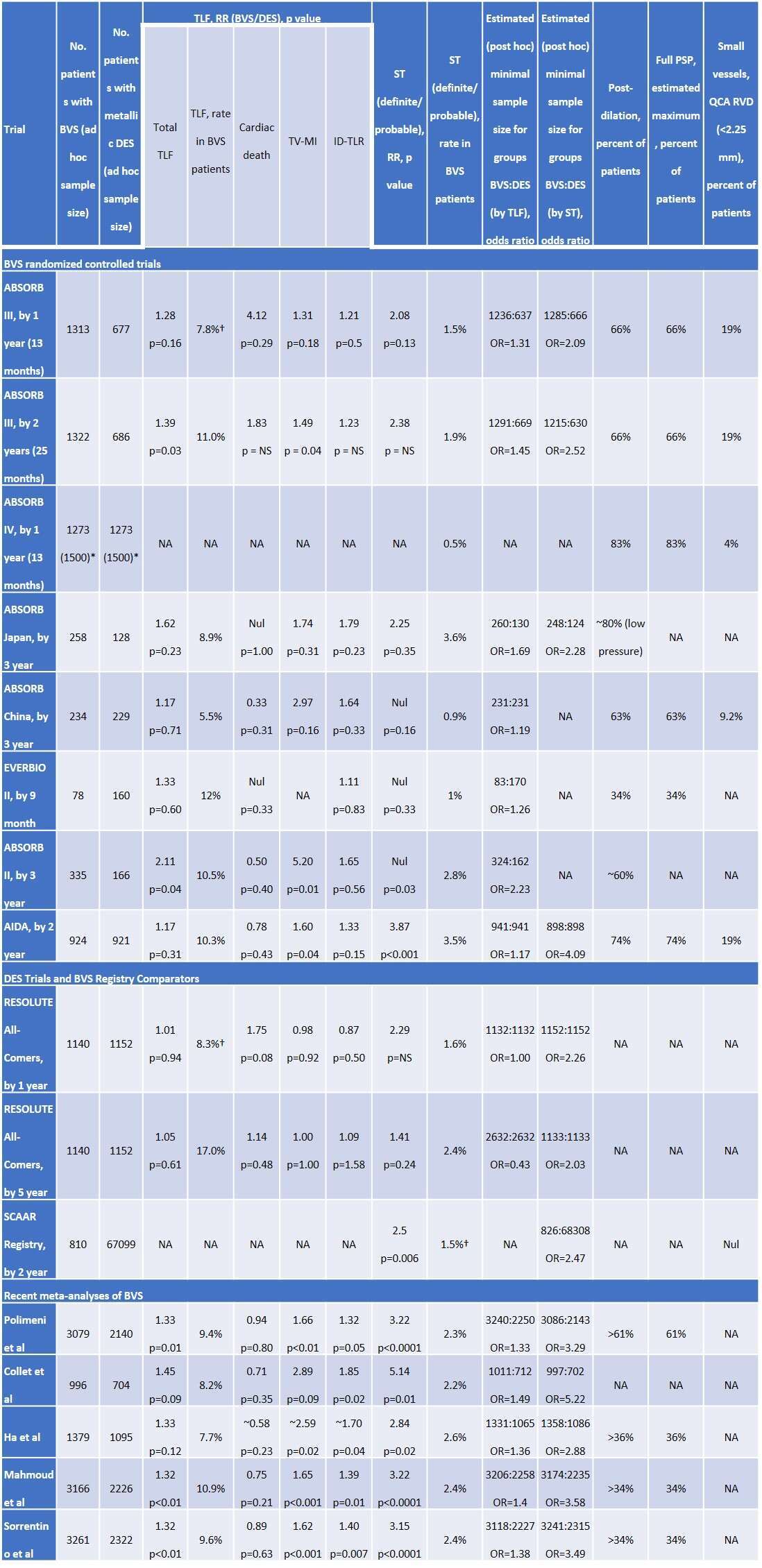
A Drama Queen Factuality of Underpowered Science in Randomized Controlled Trials of Bioresorbable Scaffolds
Introduction: The last results from a 2-year follow-up of ABSORB III trial documented higher prevalence of the target lesion failure (TLF) and scaffold thrombosis (ST) after bioresorbable scaffolds (BVS) amid the confusing statistics. The analysis was aiming to evaluate the statistical power in the relevant studies.
Methods: The study estimated the statistical power in 7 randomized controlled trials (RCT) and 5 meta-analyses by the post-hoc odds ratio-based sample size calculation in comparison with ad hoc data.
Results: The underpowered design was confirmed for ABSORB Japan, ABSORB China, EVERBIO II, AIDA trials, and meta-analyses of Polimeni, Collet and Mahmoud (see a Table) with some unintentional bias (judged by the asymmetrical Funnel plot). The screened BVS studies reported relatively higher rates of TLF (mean 9.16%) and ST (mean 2.38%) if compare with drug-eluting stents (DES). Otherwise, BVS performs at least non-inferior to DES with a trend toward some benefits for cardiac mortality (RR, 0.58-0.94, p>0.05). Both ABSORB II and ABSORB III trials were powered enough for a 5-year follow-up, but the results were not entirely conclusive due to mostly non-significant fashion of data. The powered meta-analyses were built mostly on statistically poor findings.
Conclusion: The results of the running studies remain inconclusive due to underpowered design and mostly non-significant data. The further research is required to clear trends.


Powered by Eventact EMS